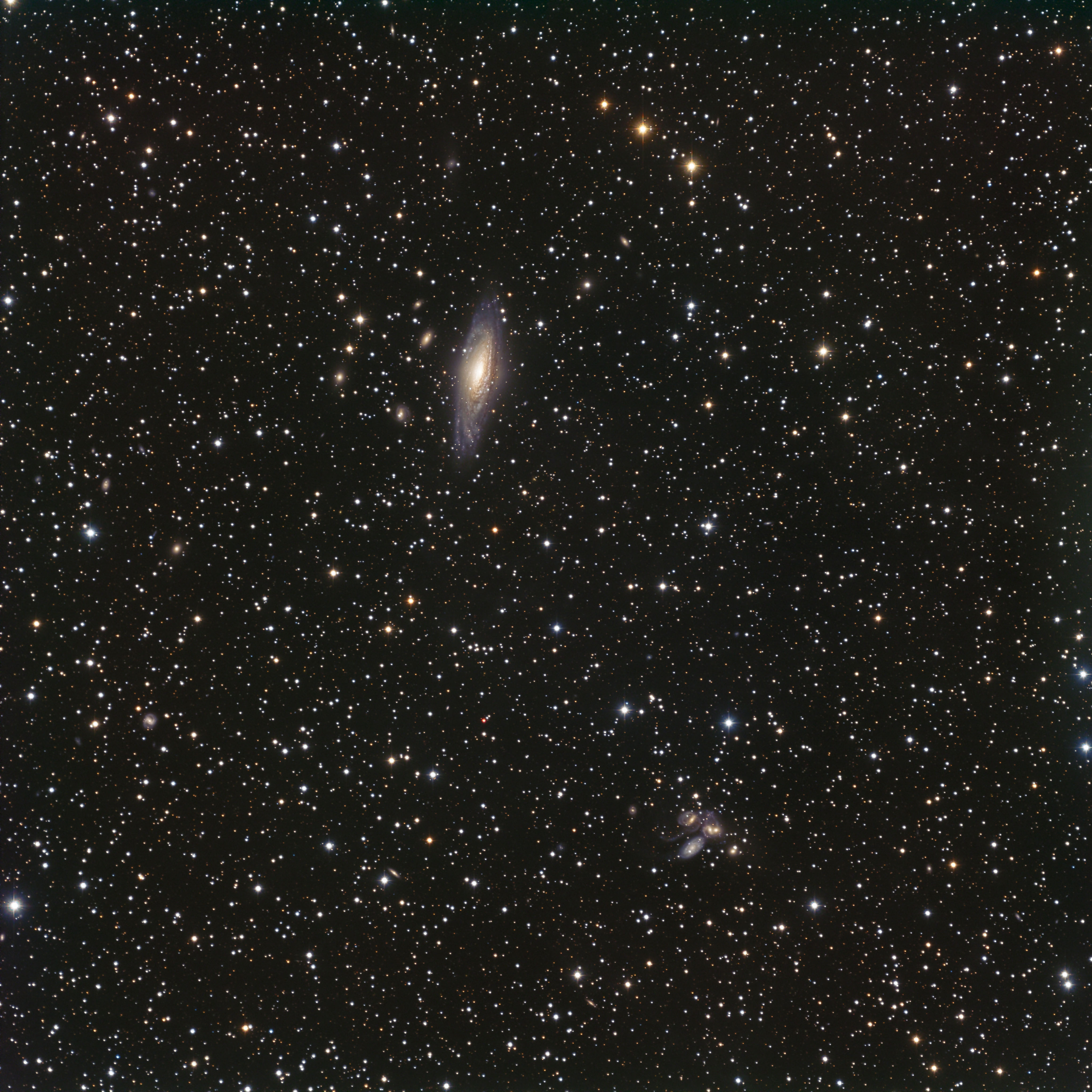Observation by Richard Francis: Deer Lick Group
Uploaded by
Richard Francis
Observer
Richard Francis
Observed
2021 Oct 13 - 22:00
Uploaded
2024 Mar 13 - 22:08
Objects
The Deer Lick Group
Planetarium overlay
Constellation
Pegasus
Field centre
RA: 22h36m
Dec: +34°14'
Position angle: +0°04'
Field size
1°04' × 1°04'
Equipment
- FLI Kepler 4040
- Officina Stellare UCRC360
- Paramount MEII
Exposure
LRGB ~40x 300s each
Location
La Romieu, SW France
Target name
Deer Lick Group
Title
Deer Lick Group
About this image
I always wanted to make an image of Stephan's Quintet (I used to work with a man called Stephan), but it's a bit small for my image scale. Then I realised I could combine it with an image of the Deer Lick group, so that's what i did !
This image shows two groups of galaxies in the constellation Pegasus. In the upper left part is the "Deer Lick" group, with the prominent spiral galaxy NGC 7331 in the foreground. At the lower right is group called Stephan's Quintet.
The Deer Lick group was named after the Deer Lick Gap in the North Carolina mountains, after amateur Tom Lorenzin had a particularly good view of it from there. NGC 7331 is the most prominent member of the group but is much closer at about 40 million light years. It was discovered by William Herschel in 1784. The four other galaxies which make up the group are almost ten times further away, at distances from 294 to 365 million light years. This spread of distances means that they are not a real galaxy group. These four are sometimes referred to as the "fleas". NGC 7331 is similar in size to our Milky Way galaxy but has some odd features: its central bulge appears not to be fully centred in the disk, and it rotates in the opposite direction to the rest of the disk.
Stephan's Quintet is named after Édouard Stephan who discovered the group in 1877 from the Marseilles Observatory, almost a hundred years after Herschel's discovery of NGC 7331. This was the first compact galaxy group discovered, though one of them (NGC 7320) is about 40 million light years from the others and not a true member of the group. The other four are interacting gravitationally, as can be deduced from their odd shapes, and are about 210 – 340 million light years away.
Files associated with this observation
Like this image
Copyright of all images and other observations submitted to the BAA remains with the owner of the work.
Reproduction of work by third parties is expressly forbidden without the consent of the copyright
holder. By submitting images to this online gallery, you grant the BAA permission to reproduce them in
any
of our publications.


